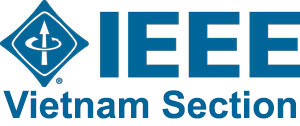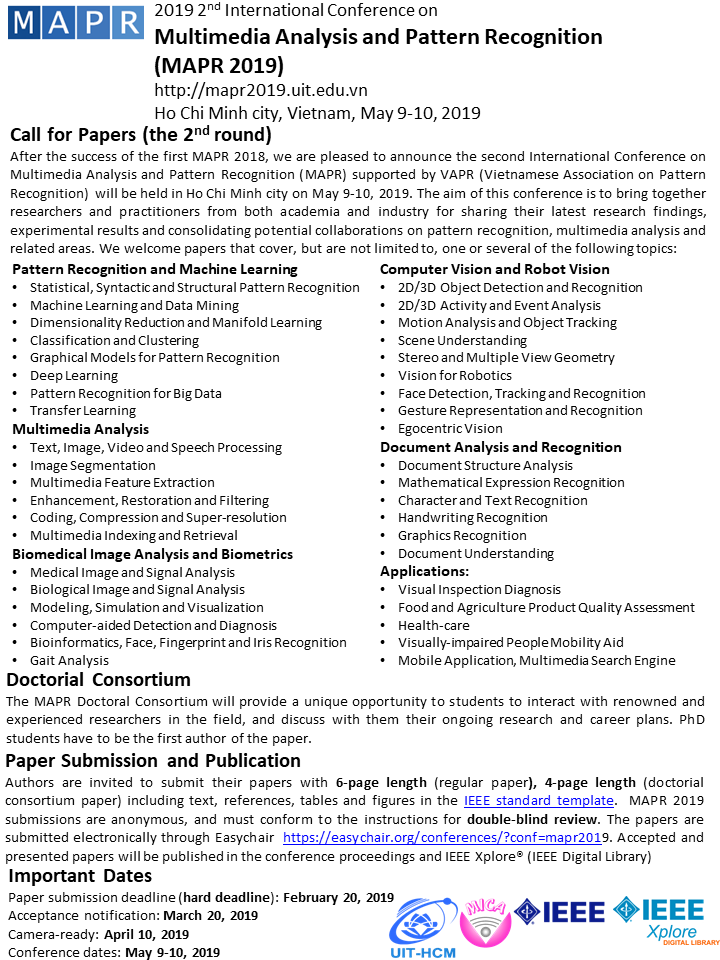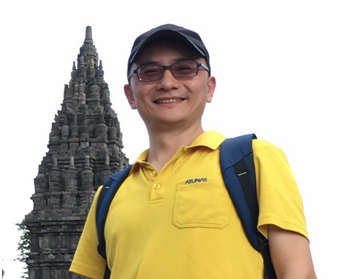 1. Associate Professor Ching-Chun Huang
1. Associate Professor Ching-Chun Huang
(The Department of Electrical Engineering, National Chung Cheng University, Taiwan)
Dr. Ching-Chun Huang received the B.S., M.S., and the Ph.D. degrees in electrical engineering from National Chiao Tung University, Hsinchu, Taiwan, in 2000, 2002, and 2010, respectively. He is currently an Associate Professor with the Department of Electrical Engineering, National Chung Cheng University, Taiwan. At the same time, he is leading a research lab, Applied Computing and Multimedia (ACM) Lab. His research interests are in image/video processing, computer vision, machine learning, and wireless sensor networks. He was also the director of the division of international student in CCU from 2016 to 2017. Before teaching, he has more than 6-year working experience in the science industry. Now, he is an IEEE Senior member.
Dr. Ching-Chun Huang has successfully led 13 Government granted projects and 14 industrial projects since 2011. Currently, his government project was selected as the excellent young scholar program; his industrial project also receives the best performance award recognized by the Taiwan government. Ching-Chun has also received the Excellent Electrical Engineer Award from National Electrical Engineering Society. Regarding academic contribution, he has published 10 international journal papers, more than 27 international conference papers and 12 patents since 2011. Meanwhile, he received the “Excellence paper Award” from Image Processing and Pattern Recognition Society (IPPR), the “Best Paper Award” from IPPR Conference on Computer Vision, Graphics, and Image Processing, and the “Best Paper Award” from IEEE international conference ICCE-TW 2016. He also serves as reviewers, program committee members, session chairs, and financial chairs of international conferences.
Talk: From Supervised Learning to Transfer Learning: Applications and Theory
In this talk, Prof. Huang will introduce their past and current research works, which is highly related to machine learning, signal processing, and computer vision. He would also share the experience of developing an intelligent vision-based parking lot management system based on conventional Deep CNNs. The other particular focus will be given to their latest research results in domain adaptations, style transfer, and disentangled representation. They attempt to discuss the three challenging tasks in a unified deep learning framework and leverage the correlations among the three tasks for training a deep network for transfer learning.
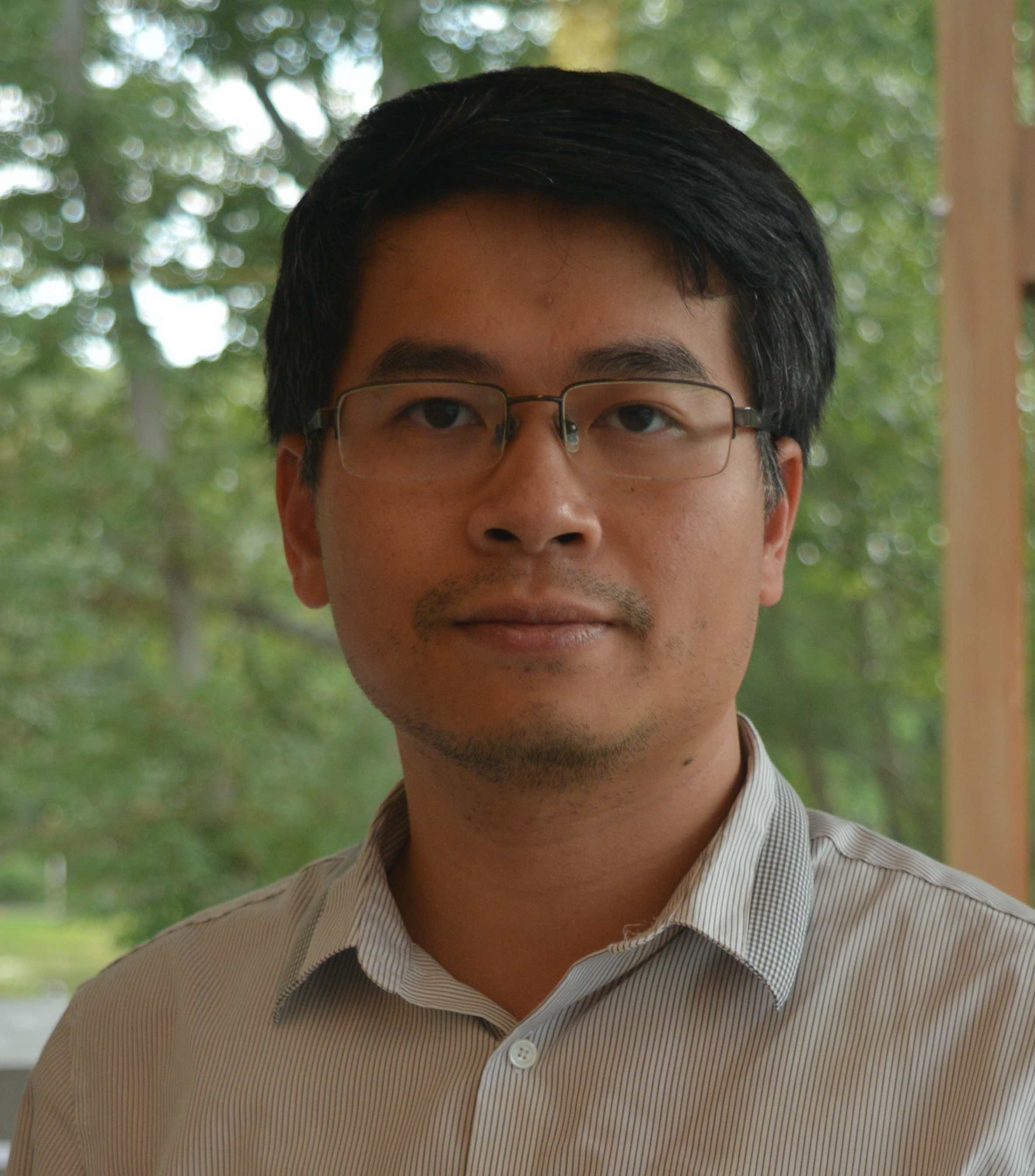 2. Assistant Professor Minh Hoai Nguyen
2. Assistant Professor Minh Hoai Nguyen
( The Department of Computer Science Stony Brook University, State University of New York)
Minh Hoai Nguyen is an Assistant Professor of Computer Science at Stony Brook University. Prior to Stony Brook, he was a research fellow at Oxford University, working with Professor Andrew Zisserman. He received a Bachelor of Software Engineering from the University of New South Wales in 2006 and a Ph.D. in Robotics from Carnegie Mellon University in 2012. His research interests are in computer vision and machine learning. In 2012, Nguyen and his coauthor received the Best Student Paper Award at the IEEE Conference on Computer Vision and Pattern Recognition (CVPR).
Talk: Attentive Human Action Recognition
Enabling computers to recognize human actions in video has the potential to revolutionize many areas that benefit society such as clinical diagnosis, human-computer interaction, and social robotics. Human action recognition, however, is tremendously challenging for computers due to the subtlety of human actions and the complexity of video data. Critical to the success of any human action recognition algorithm is its ability to attend to the relevant information during both training and prediction times.
In the first part of this talk, I will describe a novel approach for training human action classifiers, one that can explicitly factorize human actions from the co-occurring context. Our approach utilizes conjugate samples, which are video clips that are contextually similar to human action samples, but do not contain the actions. Our approach enables the classifier to attend to the relevant information and improve its performance in recognizing human actions under varying context.
In the second part of this talk, I will describe a method for early recognition of human actions, one that can take advantages of multiple cameras. To account for the limited communication bandwidth and processing power, we will learn a camera selection polity so that the system can attend to the most relevant information at each time step. This problem is formulated as a sequential decision process, and the attention policy is learned based on reinforcement learning. Experiments on several datasets demonstrate the effectiveness of this approach for early recognition of human actions.
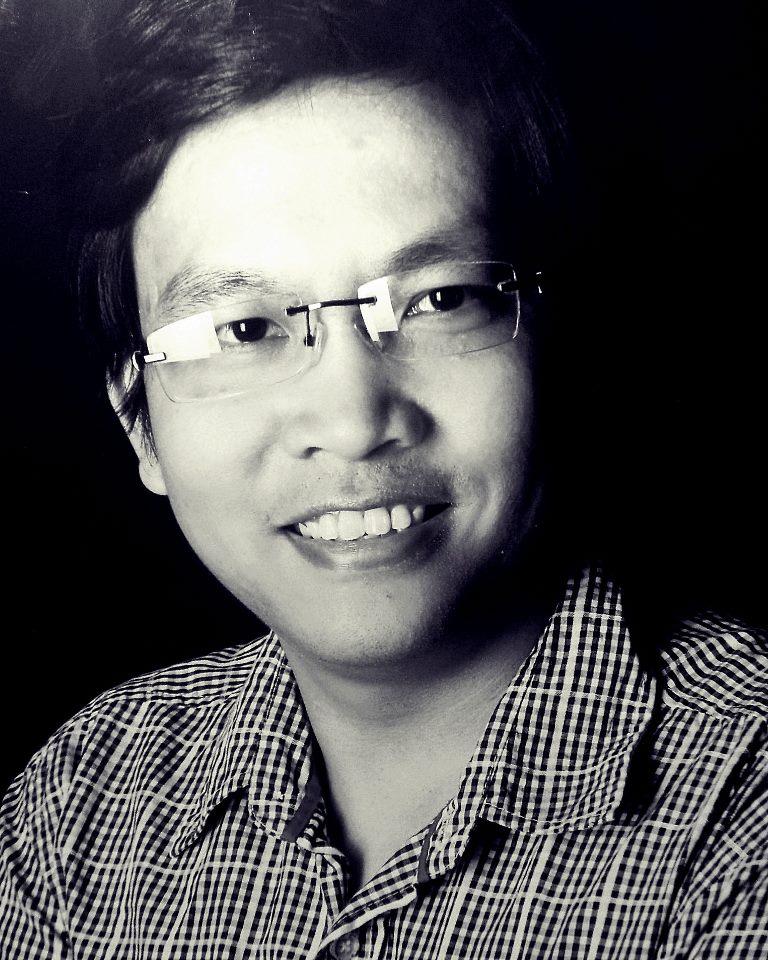 3. Associate Professor Truyen Tran
3. Associate Professor Truyen Tran
( Deakin University)
Truyen Tran is Associate Professor at Deakin University where he leads a research team on deep learning and its applications to computer vision, computational science, biomedicine and software analytics. He publishes regularly at top AI/ML/KDD venues such as NeurIPS, ICML, ICLR, CVPR, UAI, AAAI and KDD. Tran has received multiple recognitions, awards and prizes including Best Paper Runner Up at UAI (2009), Geelong Tech Award (2013), CRESP Best Paper of the Year (2014), Third Prize on Kaggle Galaxy-Zoo Challenge (2014), Title of Kaggle Master (2014), Best Student Papers Runner Up at PAKDD (2015) and ADMA (2016), and Distinguished Paper at ACM SIGSOFT (2015). He obtained a Bachelor of Science from University of Melbourne and a PhD in Computer Science from Curtin University in 2001 and 2008, respectively.
Talk:Representation learning on graphs
This talk introduces representation learning on graphs, a recent fast growing research area that expands the reach of deep learning to relational and non-Euclidean data which are prevalent in scientific fields such as social networks, knowledge graphs, visual scene understanding, atomic physics, chemistry and biology. Specific topics include node embedding, link prediction, graph classification, collective classification, graph transformation, graph-graph interaction and scene graphs generation. In between, I will discuss AI/ML methodologies involved including relational learning, reinforcement learning, generative models, and neural reasoning. I will also discuss open problems and room for collaboration.
( University of Utah School of Medicine)
Dr. Hurdle holds the rank of Professor in the Department of Biomedical Informatics (BMI) at the University of Utah. What is Biomedical Informatics? Think of it as the intersection of computer science and healthcare. That sounds like a new discipline, but the University of Utah BMI program is more than a half century old. The University of Utah has the oldest and one of the largest graduate programs in biomedical informatics in the world. Prof. John joined the Utah BMI faculty in 2006. He chaired the University of Utah's medical research ethics board for two years prior to that, from 2004 to 2006. A quick summary of the (many) years before joining BMI: Prof. John studied chemistry as an undergraduate; he completed his medical doctorate (MD) and his Master's degree (MS) in Computer Science in 1981; he worked in hospital and university settings from 1981 to 1990; he returned to graduate school in 1990 and took his PhD in Computer Science in 1995; then Prof. John worked as a biomedical informatics researcher at the US veteran's hospital in Salt Lake City from 1996 to 2004. Over the past 20 years he has authored or co-authored 75+ papers, received over $15M in grants, taught classes, and proudly mentored 35+ graduate students (MS and PhD). His wife, Prof. Colleen McDannell, holds an endowed chair in the Department of History at the University of Utah, His daughter, Ms. Brigit, works as a research associate at the Dana-Farber Cancer Institute, Harvard University.
Talk: Data Science and "Big Data" in The USA, a use-case of American healthcare
This talk presents four key aspects of Data Science and "Big Data" in the US, using American healthcare as the use-case. I start with a brief definition of Data Science and Big Data, followed by a brief answer to the question, "Why are Data Science and Big Data important?". To a Hung Yen University audience, these two aspects of Data Science are probably obvious, so I cover them quickly. Most of the talk focuses on the less obvious. First, I outline the huge growth of data sources over the past 20 years, especially in American healthcare. That growth in data sources and data volume (Big Data) made the creation of Data Science essential. Then I describe current technology trends and applications in US healthcare Data Science. Two key factors motivate my choice of US healthcare as a use-case: healthcare is the largest industrial sector of the US economy (!) and many of the truly innovative applications of Data Science are found in medicine and health management.






